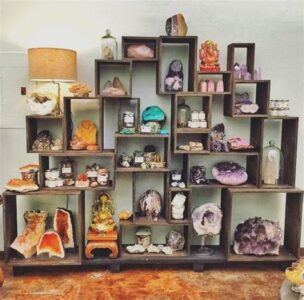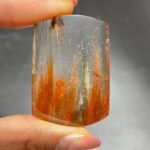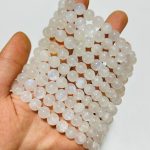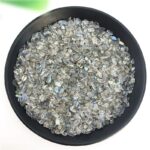Yellowish green crystals are a breathtaking spectacle that have captivated humans for centuries. Their unique hue and alluring properties have inspired countless works of art, literature, and scientific exploration. In this comprehensive article, we delve into the fascinating world of yellowish green crystals, unraveling their captivating history, extraordinary characteristics, and potential applications.

A Kaleidoscope of Origins
Yellowish green crystals are formed through a remarkable geological journey that spans millions of years. These exquisite gems originate from various minerals, each with its own unique composition and physical properties.
- Olivine: Olivine, also known as the “gem of the Orient,” is a magnesium-rich mineral that boasts a striking yellowish green hue. It is primarily found in volcanic rocks and meteorites.
- Epidote: Epidote, a calcium-aluminum-iron silicate mineral, exhibits a range of yellow-green shades. It is commonly found in metamorphic and hydrothermal rocks.
- Tourmaline: Tourmaline, renowned for its vibrant color variations, can also form yellowish green crystals. These gems are found in pegmatites and granite rocks.
- Zircon: Zircon, a zirconium silicate mineral, can produce yellowish green crystals when trace elements like uranium are present. It is found in igneous rocks.
- Apatite: Apatite, a calcium phosphate mineral, occasionally forms yellowish green crystals. It is primarily found in sedimentary and hydrothermal rocks.
Extraordinary Characteristics
Yellowish green crystals possess an array of captivating characteristics that set them apart from other gemstones:
- Color: Their unique yellowish green hue is a result of the presence of iron (Fe) and magnesium (Mg) ions in their molecular structure. The intensity of the green coloration depends on the concentration of these ions.
- Hardness: The hardness of yellowish green crystals varies depending on the mineral they originate from. Olivine, for instance, has a hardness of 6.5 to 7 on the Mohs scale, while epidote ranges from 6 to 7.5.
- Clarity: The clarity of yellowish green crystals can vary from transparent to opaque. Olivine and tourmaline often exhibit excellent clarity, allowing light to pass through them, while epidote tends to be more opaque.
- Luster: Yellowish green crystals typically display a vitreous or greasy luster, which means they have a glassy or oily appearance when exposed to light.
- Optical Properties: Some yellowish green crystals, such as epidote, exhibit pleochroism, which means they display different colors when viewed from different angles.
Mystical and Cultural Significance
Yellowish green crystals have held a profound significance in numerous cultures throughout history:
- Ancient Egypt: In ancient Egypt, yellowish green crystals, particularly olivine, were believed to have divine powers. They were often used in jewelry and amulets to ward off evil spirits and promote good health.
- Medieval Europe: During the Middle Ages, yellowish green crystals were prized for their beauty and believed to have healing properties. They were often incorporated into religious artifacts and worn as talismans.
- Modern Spirituality: In contemporary times, yellowish green crystals are used in various spiritual practices. They are said to promote emotional balance, reduce stress, and enhance creativity.
Modern-Day Applications
Beyond their aesthetic and spiritual significance, yellowish green crystals have found practical applications in modern technology and industry:
- Jewelry: The beauty and durability of yellowish green crystals make them coveted gemstones for jewelry. They are used in rings, earrings, necklaces, and pendants.
- Industrial Abrasives: Olivine, due to its hardness and sharp edges, is used as an abrasive in cutting and polishing applications.
- Laser Technology: Neodymium-doped yellowish green crystals are used as gain media in high-power lasers, providing precise and efficient energy output.
- Fuel Cells: Yellowish green crystals, such as yttria-stabilized zirconia (YSZ), are employed as electrolytes in fuel cells to enhance their efficiency and durability.
- Water Filtration: Yellowish green crystals, like activated clay, are used as adsorbents in water filtration systems to remove impurities and contaminants.
Creative Applications: “Crystalloception”
Inspired by the unique properties of yellowish green crystals, scientists and artists have explored novel applications across various fields:
- Crystalloception: A newly coined term, “crystalloception,” refers to the ability of crystals to interact with electromagnetic waves and potentially transmit information. This concept has sparked research into the potential use of crystals in advanced communication and sensing technologies.
- Biomedical Engineering: Yellowish green crystals, such as hydroxyapatite, are being investigated for use in bone and tissue regeneration applications. These crystals mimic the natural mineral composition of bones and can promote cell growth and tissue repair.
- Quantum Computing: Yellowish green crystals, like cerium-doped yttrium aluminum garnet (Ce:YAG), are used as scintillators in quantum computing to detect and manipulate quantum states.
Tabular Data: A Comprehensive Overview
For quick reference and easy understanding, here are four comprehensive tables summarizing the key aspects of yellowish green crystals:
| Table 1: Mineral Origins |
|—|—|
| Mineral | Yellowish Green Crystal |
|—|—|
| Olivine | Peridot |
| Epidote | Pistachio Epidote |
| Tourmaline | Verdelite Tourmaline |
| Zircon | Chartreuse Zircon |
| Apatite | Asparagustone |
| Table 2: Physical Properties |
|—|—|
| Property | Range |
|—|—|
| Hardness | 6.5 to 7.5 (Mohs scale) |
| Clarity | Transparent to opaque |
| Luster | Vitreous to greasy |
| Pleochroism | Present in some crystals (e.g., epidote) |
| Birefringence | Present in some crystals (e.g., tourmaline) |
| Table 3: Cultural Significance |
|—|—|
| Culture | Significance |
|—|—|
| Ancient Egypt | Divine powers, protection, health |
| Medieval Europe | Healing properties, religious artifacts, talismans |
| Modern Spirituality | Emotional balance, stress reduction, creativity enhancement |
| Table 4: Modern-Day Applications |
|—|—|
| Application | Material |
|—|—|
| Jewelry | Olivine, tourmaline |
| Industrial abrasives | Olivine |
| Laser technology | Neodymium-doped yellowish green crystals |
| Fuel cells | Yttria-stabilized zirconia (YSZ) |
| Water filtration | Activated clay |
Conclusion
Yellowish green crystals are a captivating natural wonder that have captured the imagination and fascination of humans for centuries. Their unique hue, extraordinary characteristics, and rich cultural significance continue to inspire and intrigue. As technology and scientific understanding advance, new applications emerge, unlocking the potential of these mesmerizing gems in a wide range of fields. From ancient talismans to modern technological innovations, yellowish green crystals continue to weave an intricate tapestry of beauty, mystery, and endless possibilities.




























